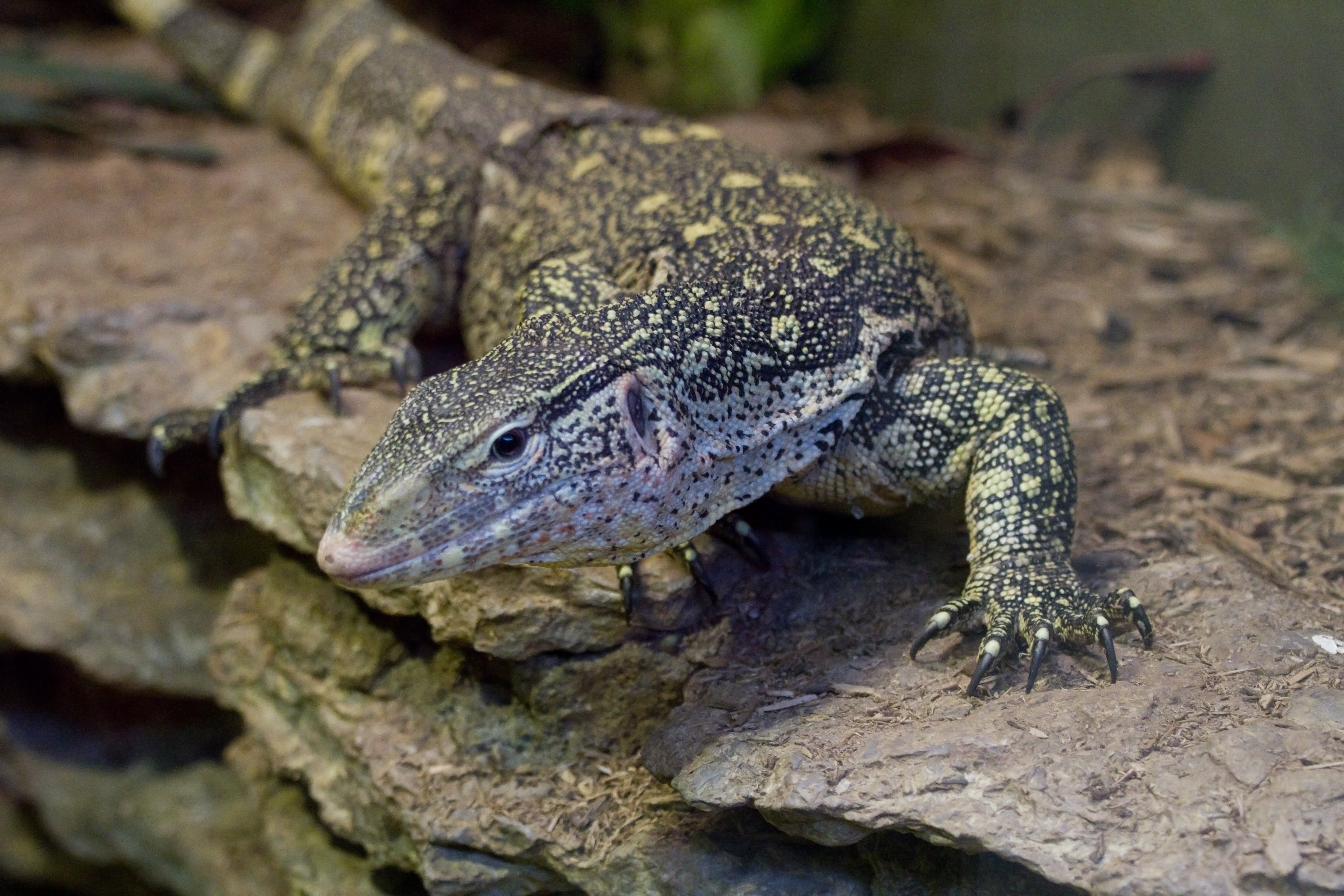Ornate Monitor on:
[Wikipedia]
[Google]
[Amazon]
 The ornate monitor (''Varanus niloticus ornatus'') is a
The ornate monitor (''Varanus niloticus ornatus'') is a
 The back is dark – olive green to black – with cross bands of yellow or cream color
The back is dark – olive green to black – with cross bands of yellow or cream color 
 The ornate monitor (''Varanus niloticus ornatus'') is a
The ornate monitor (''Varanus niloticus ornatus'') is a monitor lizard
Monitor lizards are lizards in the genus ''Varanus,'' the only extant genus in the family Varanidae. They are native to Africa, Asia, and Oceania, and one species is also found in the Americas as an invasive species. About 80 species are reco ...
that is native to West
West or Occident is one of the four cardinal directions or points of the compass. It is the opposite direction from east and is the direction in which the Sun sets on the Earth.
Etymology
The word "west" is a Germanic word passed into some ...
and Middle Africa
Central Africa is a subregion of the African continent comprising various countries according to different definitions. Angola, Burundi, the Central African Republic, Chad, the Democratic Republic of the Congo, the Republic of the Congo, ...
. Comprehensive molecular analyses of the group have demonstrated that animals previously assigned to "''Varanus ornatus''" do not constitute a valid taxon
In biology, a taxon ( back-formation from '' taxonomy''; plural taxa) is a group of one or more populations of an organism or organisms seen by taxonomists to form a unit. Although neither is required, a taxon is usually known by a particular n ...
and are actually polymorphisms of two different species; ''Varanus stellatus
The West African Nile monitor (''Varanus niloticus stellatus'') is a species of monitor lizard that is native to West African forests and adjacent savannah (east to northern Cameroon). It has also been introduced to Florida, United States, w ...
'' (west African Nile monitor) and '' Varanus niloticus'' (Nile monitor).Dowell, S.A, D.M. Portik, V. de Buffrenil, I. Ineich, E. Greenbaum, S.O. Kolokotronis and E.R. Hekkala. (2015). Molecular data from contemporary and historical collections reveal a complex story of cryptic diversification in the ''Varanus (Polydaedalus) niloticus'' Species Group. ''Molecular Phylogenetics and Evolution.'' doi:10.1016/j.ympev.2015.10.004 Consequently, ''Varanus ornatus'' is considered a synonym of ''Varanus niloticus'' and "ornate monitor" is an informal term for forest forms of either species (''V. niloticus'' or ''V. stellatus'').
Until 1997, the ornate monitor was considered a subspecies of the Nile monitor. It was subsequently described as a separate species on the basis of reduced number of ocelli rows on the body, a light coloured tongue and a more massive build.Böhme, W., & Ziegler, T. (1997). A taxonomic review of the ''Varanus (Polydaedalus) niloticus'' (Linnaeus, 1766) species complex. ''The Herpetological Journal'' 7: 155-162. More recent work based on a large sample size using mitochondrial and nuclear DNA sequences indicates that ''Varanus ornatus'' is not a valid species and that animals with the diagnostic appearance belong either of two sister species of Nile monitor. Animals described as ornate monitor lizard
Monitor lizards are lizards in the genus ''Varanus,'' the only extant genus in the family Varanidae. They are native to Africa, Asia, and Oceania, and one species is also found in the Americas as an invasive species. About 80 species are reco ...
s are native to closed canopy forests in West
West or Occident is one of the four cardinal directions or points of the compass. It is the opposite direction from east and is the direction in which the Sun sets on the Earth.
Etymology
The word "west" is a Germanic word passed into some ...
and Middle Africa
Central Africa is a subregion of the African continent comprising various countries according to different definitions. Angola, Burundi, the Central African Republic, Chad, the Democratic Republic of the Congo, the Republic of the Congo, ...
.
Description
 The back is dark – olive green to black – with cross bands of yellow or cream color
The back is dark – olive green to black – with cross bands of yellow or cream color ocelli
A simple eye (sometimes called a pigment pit) refers to a form of eye or an optical arrangement composed of a single lens and without an elaborate retina such as occurs in most vertebrates. In this sense "simple eye" is distinct from a multi-le ...
plus additional bands on the tail. The ventral side is yellowish with gray banding. The number of ocelli bands on the body, four, or five, was supposed to distinguish ''V. ornatus'' from ''V. niloticus'', which has from six to nine. The markings fade somewhat as the animal matures. Ornate monitors are quite large and can grow up to two metres in length.
References
Varanus Lizards of Africa Reptiles described in 1803 {{Lizard-stub